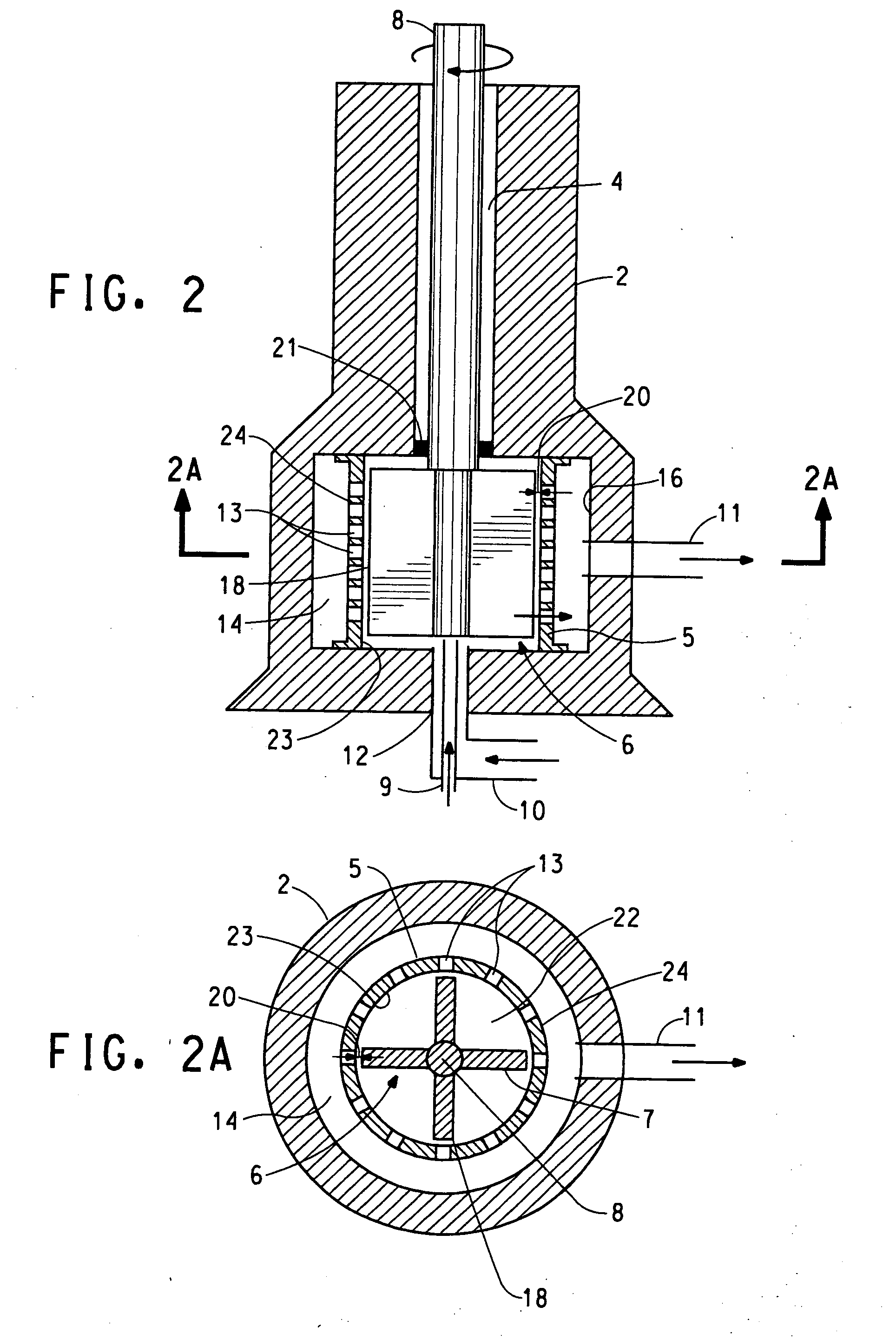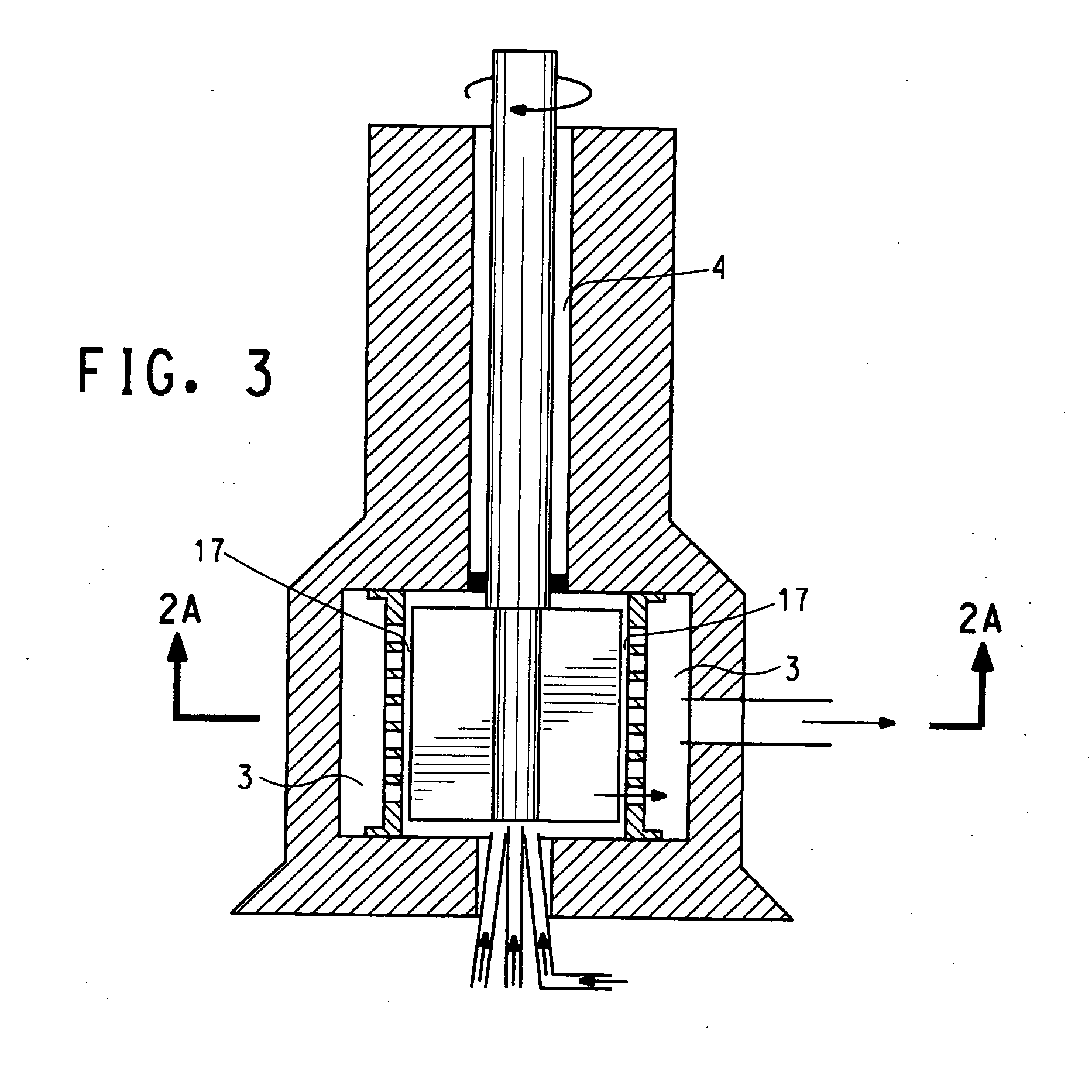Rotor-stator apparatus and process for the formation of particles
a technology of rotating shafts and rotating shafts, which is applied in the direction of plant/algae/fungi/lichens ingredients, chemical/physical/physical-chemical stationary reactors, chemical/physical/physical-chemical reactor details, etc., can solve the problems of reducing affecting the production efficiency of the product, so as to reduce the solubility of materials and reduce the size distribution. , the effect of reducing
- Summary
- Abstract
- Description
- Claims
- Application Information
AI Technical Summary
Benefits of technology
Problems solved by technology
Method used
Image
Examples
example 1
[0080] Glycine was dissolved in water to prepare 1 L of a 5% (w / w) aqueous solution. The solution was kept at room temperature + / −10 degrees C. This solution was fed to a Silverson Model L4RT-A Rotor-Stator in-line mixing assembly (Silverson Machines, Inc., East Longmeadow, Mass., USA) at a flow rate of 190 mL / min. Simultaneously, anhydrous ethanol (>99%) was co-fed to this rotor-stator, also at 190 mL / min. The rotor-stator was operated at 10,000 rpm. The exit stream of the rotor-stator contained mother liquor and crystals of glycine with an elongated block-like habit, which were observed under a videomicroscope at magnifications up to 1000×. The mean size of these crystals was measured to be 25 μm. A quenching solution of 50% water, 50% ethanol (saturated with dissolved glycine) was used to dissipate residual supersaturation of the exit stream from the rotor-stator.
example 2
[0081] The same procedure as in Example 1 was used, except the quenching solution contained 100% ethanol (saturated with glycine). Formed were crystals of sizes ranging from 25 μm to 60 μm and having an interpenetrant (or cruciform) twin habit.
example 3
Glycine
[0082] The same procedure as in Example 1 was used, except where the rotor-stator speed was 5,000 rpm. Formed were block-like crystals where the mean size was 40 μm.
PUM
| Property | Measurement | Unit |
|---|---|---|
| particle size | aaaaa | aaaaa |
| particle size | aaaaa | aaaaa |
| particle size | aaaaa | aaaaa |
Abstract
Description
Claims
Application Information
 Login to View More
Login to View More - R&D
- Intellectual Property
- Life Sciences
- Materials
- Tech Scout
- Unparalleled Data Quality
- Higher Quality Content
- 60% Fewer Hallucinations
Browse by: Latest US Patents, China's latest patents, Technical Efficacy Thesaurus, Application Domain, Technology Topic, Popular Technical Reports.
© 2025 PatSnap. All rights reserved.Legal|Privacy policy|Modern Slavery Act Transparency Statement|Sitemap|About US| Contact US: help@patsnap.com



